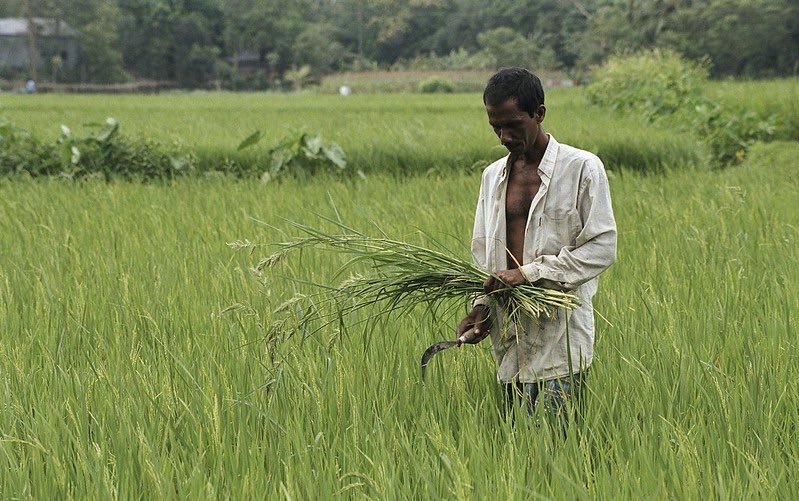Excess nitrogen produced by agricultural activities, mainly from manure and chemical fertilizers, is a primary source of nutrient pollution and presents serious environmental threats to natural ecosystems and human health. Particularly when it reaches bodies of water, excess nitrogen can lead to dead zones, hypoxia, fish kills and algal blooms that threaten biodiversity, and can contaminate drinking water to create unsafe conditions for humans.
Improvements in nitrogen-use efficiency in crop production are critical for addressing the triple challenge of food insecurity, environmental degradation, and climate change. Approaches such as sustainable intensification that stress technological innovations have received the most attention. But a promising complementary approach, science-based land use planning, has so far been largely overlooked.
Our recent research, published in Environmental Research Letters, assesses this previously unexplored potential for improving the economic-environmental performance of crop production by examining the seasonal and spatial implications of land and fertilizer use in Bangladesh. We find that adjusting fertilizer use across the country’s seasons could reduce nitrogen loss in Bangladesh by more than 80%. This suggests such an approach has great promise for improving environmental outcomes while preserving crop yields and maintaining food security.
Inefficient use of nitrogen is pervasive in agriculture in Bangladesh, leading to higher production costs, soil degradation, and human health risks mediated by water pollution.
Our analysis used spatially integrated (economic-ecological) modeling to examine the production of rice and non-rice crops and the impact of fertilizer use across three cropping seasons in Bangladesh, using remote-sensing, agricultural census, and Bangladesh Integrated Household Survey data. We simulated three different scenarios of fertilizer use impacts, based on season-, location-, and crop-specific relationships. The model aims to find optimal scenarios that minimize the country’s total nitrogen loss from soil across the annual three crop growing seasons through changing the nitrogen application rate and reallocating cultivation between rice and non-rice crops across seasons (and districts), subject to a set of economic and physical constraints concerning total annual output value, food security, and season-specific cropland availability.
Three approaches were modeled:
- Seasonal optimization: Fertilizer application is optimized across seasonal variations within each district, while maintaining farmers’ production revenue in districts.
- Seasonal-spatial optimization: Fertilizer application is optimized across seasons and the country as a whole, while maintaining that the country’s farmers as a whole would not see a loss in production revenue.
- Integrated optimization: Fertilizer application is optimized across seasons with the help of price instruments that guide the reallocation of crop areas, giving the government a potential tool to better target the economic-environmental performance of crop production.
The results reveal in the seasonal optimization scenario nitrogen loss per-billion-Taka crop revenue would decline by 80% compared to the status quo.
Our seasonal-spatial optimization scenario reveals a further 3% drop in nitrogen loss when reallocation across districts is also considered. Yet this slight improvement in efficiency gain comes at a non-trivial social cost in terms of distributional effect—30 of 64 districts would see a loss in production revenue in the range of 0.176 to 30.9 billion Taka ($0 to $36.2 million) each year. Despite being the first-best optimal solution, the distributional effect is probably costly to address.
The third scenario, integrating the land use model with the seasonal-spatial optimization and allowing crop prices, instead of cultivated areas, to drive the optimization solution, results in a smaller but still substantial improvement in economic-environmental performance than the other two scenarios. In this scenario, nitrogen loss per-billion-Taka crop revenue would decrease by 69% from the status quo. This suggests that the government could use crop prices-oriented policies to guide reallocation and improve environmental conditions while lessening the social costs of such reallocation.
Our research sheds light on the importance of crafting a national strategy for planning crop cultivation across growing seasons and terrestrial locations to improve the environmental efficiency of fertilizer use. Implementing such a strategy requires the central government methodically coordinating and incentivizing districts to take action while balancing distributional effect, which is no easy task for any country, but, as our analysis demonstrates, the potential economic-environmental efficiency gain can be enormous. The analysis can inform policies that encourage environmentally sustainable food security through possible tradeoffs and opportunities in agricultural land use planning—an urgent task for countries that facing multiple, interconnected challenges of food insecurity, farmer income, and environmental pollution.
Man Li is an Assistant Professor of Resource Economics at Utah State University; Zhe Guo is a Senior GIS Coordinator with IFPRI’s Environment and Production Technology Division (EPDT); Wei Zhang is an EPTD Senior Research Fellow.
This work was supported by the NASA Land-Cover and Land-Use Change (LCLUC) Program, the CGIAR Research Program on Water, Land and Ecosystems (WLE), and the USDA National Institute of Food and Agriculture.







